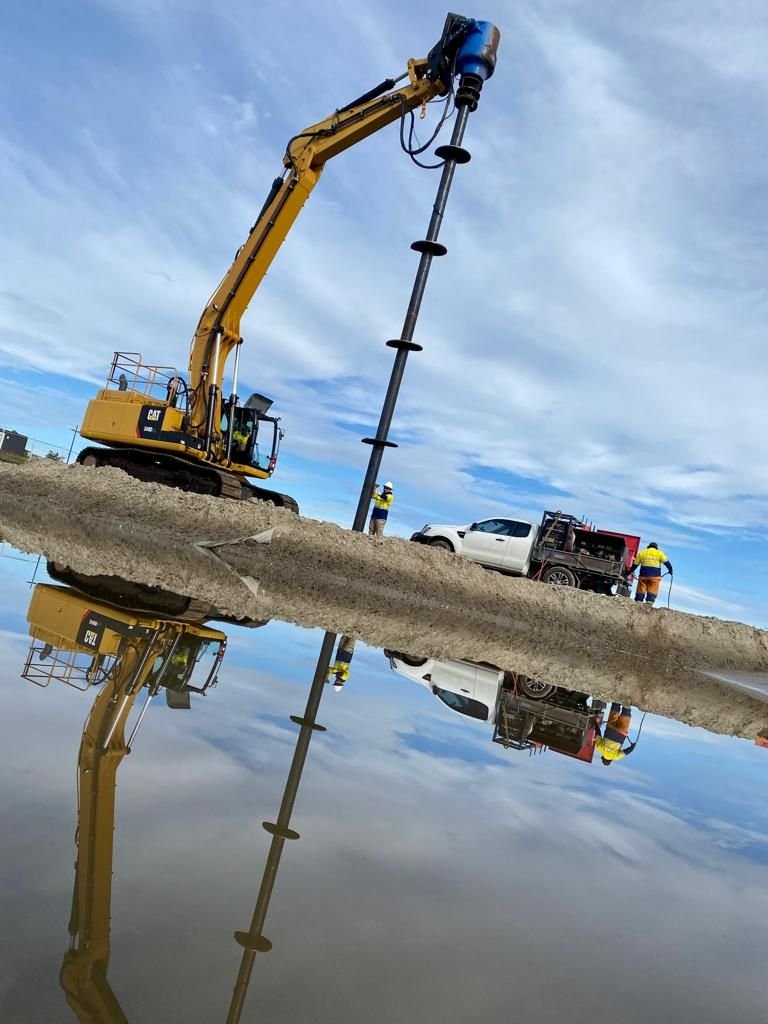SOMETIMES MORE IS... WELL... MORE.
Why does this #screwpile have so many helices???
A screw pile is usually considered an "end bearing" pile. That means all of the load from the superstructure/building travels down through the shaft and then through the helix (normally only one or two of them) and into the rock / founding layer.
Some of the biggest load test results we've seen (in compression and tension) have usually only had 1 to 2 helices - but that was because the rock was consistent, with great bearing capacity and so the load was able to be transferred successfully.
So if you're wondering why the below photo has sooooooooo many helices - the inference, therefore, is because the "rock" is not as "good" to transfer the load into, and so we therefore need more helices to transfer the load.
This obviously has a trade-off, where more helices means more cost. But on this site the alternative of getting a bored pile to 30m is comparatively expensive too, along with things like negative skin friction, etc.
Like always - the key to choosing the best foundation methodology is to understand:
1. the loads you need to achieve,
2. the geotech (through you go through, and then found in) and,
3. the circumstances at ground level where plant have to work.
Good solid "ECI" (Early contractor involvement) will always help ensure you get this right!
Making more equal less, (...or more, depending on the circumstances)
REVEX PILING
#screwpiles #helicalpiles #piling #geotechnicalengineering

